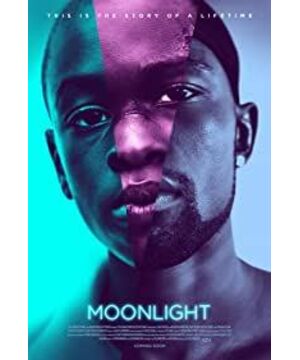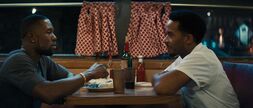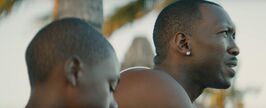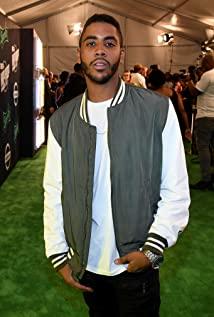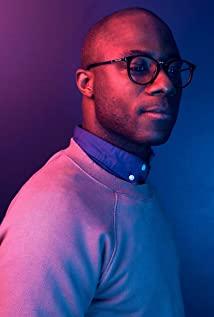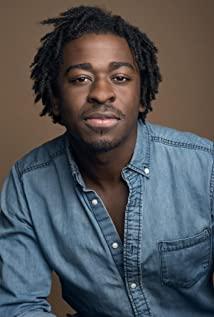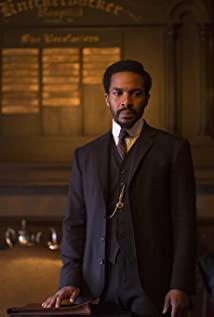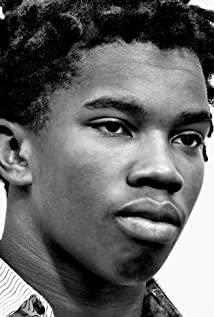"Moonlight" directed by Barry Jenkins won Best Picture at the 89th Academy Awards. The film has prominent racial and sexual minority elements, but these should not be its primary labels. The film does not magnify and render special labels in the narrative, but tells the story of a boy who finally finds himself through the growth process of a boy.
1. The blue boy in the moonlight
The film adopts a three-stage structure to tell the story. The title is named after Little, Chiron, and Black, which respectively tells the experience of the protagonist Chiron's childhood, juvenile, and adulthood. The first paragraph focuses on Chiron's family life. He has an addict mother and lacks father's love. When he contacts with Juan, the comfort he can't get in his original family is satisfied. Juan takes care of him like a little father, while also teaching him survival skills. In the scene where Huan teaches Xiaodian to swim, the waves are rolling in the low-level perspective, and Xiaodian never swims until he can swim alone without Juan's protection. This process also symbolizes the process of Xiaodian's departure from shelter and toward independence. In the whole film, the sea water and moonlight often appear, sometimes it is its original image, and sometimes it is also expressed through symbolic means. Juan tells the story of "Black Boy in the Moonlight" to Little Dot, which is the theme and thread of the whole film. The protagonist finds his heart in the water waves under the moonlight every time, which is echoed in the next two paragraphs.
In the second paragraph, Chiron's juvenile experience is mainly described with the change of the relationship between Chiron and his mother, and the change of Chiron and Kevin's feelings as clues. The premise of the mother's addict status in the first paragraph triggers a change in the relationship between mother and child in the second paragraph, and the change in the relationship between mother and child accelerates the generation of Chiron and Kevin's emotional line. Frustrated at home, then bullied at school, Chiron sits helplessly on the beach in the moonlight. It was by the waves in the moonlight that Chiron had the first sexual experience of his life. Chiron and Kevin kiss under the moonlight and have a skin-to-skin kiss, which is also Chiron's confirmation of his sexuality. However, the relationship between the two was blocked by external factors. The bad guy encouraged Kevin to beat Chiron, and Chiron retaliated against the bad guy and eventually went to jail, which triggered the third reunion between the two after a long absence. When Chiron and Kevin were cuddling each other under the moonlight by the sea, the faint sound of the waves might remind him of the picture of learning to swim with Juan when he was a child. As a healthy adult male, Juan had a positive effect on Chiron's outlook on life, which also It paved the way for Chiron's living conditions in the third period of adulthood.
The third episode depicts Chiron's life as an adult. Like Juan, Chiron became a drug dealer. Perhaps in Chiron's mind, although drug dealers were illegal, Juan, who was also a drug dealer, brought him some positive thoughts. Juan was his guiding light in his youth, so Chiron didn't know. Unconsciously living like Juan. Chiron also put the same decorations in Juan's car in the car, and has the same strong physique as Juan through fitness. The third stage is also the process of solving the relationship between the characters. Chiron meets with her mother many years later, and the mother and son reconcile. Chiron received a call from Kevin and drove to Kevin's hotel, where they met again. It is at the end of the film that Chiron expresses his heart to Kevin, and this sentence is not only said to Kevin, but also to himself by the protagonist. He accepted his identity with practical actions, so in the last shot of the film, the young Chiron under the moonlight seaside looked back. The moonlight shines on his body, and his body glows blue. This is a visual representation of the theme and the hub of the three episodes.
2. Subjective audiovisual language
1. Flexible camera scheduling
The camera presents fluctuating visual effects with more hand-held shots and wrap-around scheduling, constructing an external environment full of variables where the protagonist is located, and at the same time, the subjective perspective externalizes the inner world of the protagonist Chiron. The Steadicam photography at the beginning of the film established the visual tone of the film with a sense of blur. In the dialogue scene between Juan, the drug dealer and the addict, the camera first followed the shooting with Juan as the center, and then passed through a continuous 360-degree wraparound. The filming highlights the intense dialogue between drug dealers and addicts, in which a dizzying long shot is completed with the characters' movements pointing to the center, followed by a shaky chasing perspective to draw out the protagonist, Little Little. The little guy has a troubling feeling right from the start. Corresponding to the hand-held long shot at the beginning is the scene in the second paragraph of the film in which Kevin is instigated by the bad guy to beat Chiron. In this scene, the long shot of hand-held photography is still used as the opening. First, the bad guy is the tracking center for a 360-degree surround. Style photography, the fast-moving images accelerate the accumulation of violent emotions, which contrasts Chiron's helplessness and weakness at this time.
The more hand-held photography used in the film reflects the extreme emotions of the characters, while the relatively stable shots show a peaceful and stable relationship between the characters. For example, when the protagonist gets along with Juan and Tereza, their dialogue scenes use fixed shots, and the slow and steady panning shows a peaceful atmosphere. The protagonist and Kevin used a relatively steady hand-held shot in the scene of Moonlight Beach, which created a quiet and ambiguous atmosphere while maintaining the vitality of the picture. In the third paragraph of the film, after the protagonist and Kevin reunite after a long absence, the dialogue between the two in the restaurant is more of a fixed camera, focusing on capturing the facial expressions of the characters and amplifying the sadness of the characters. Throughout the whole film, it begins with a long shot of Steadicam full of confusion, and ends with a smooth shot, which symbolizes the protagonist's confusion and helplessness from the beginning to the final self-identification, showing a contrast of mentality before and after.
2. Changed colors
Blue, white, red and black are the main colors of the film. In the film, blue represents melancholy and is also a symbol of homosexuality; white represents purity; red represents danger; black represents depression. The blue that runs through the whole film creates a melancholy atmosphere in the living environment of the protagonist, deepens the introverted character of the protagonist, and makes him appear more melancholy and helpless. For example, in terms of color matching, the picture is bluish as a whole, and the cool color makes the picture appear more cold. Juan's furniture and the school's wall tables and chairs use blue as the main color, especially the moonlight in the theme is also presented in blue in the picture. It can be said that blue is the representative color of the protagonist. The little guy that appears at the end of the film is bathed in the moonlight by the sea, and the blue of his dark skin is the finishing touch of the film. Red, which is complementary to blue, is the representative color of mothers. The appearance of mothers is often accompanied by quarrels and anger, so red is used to externalize the contradiction between mother and child. For example, in the two scenes where the protagonist's mother gets angry, the red light in the background fills the picture, making the picture look angry.
Also worth mentioning is the use of yellow. In Chiron's decision to take revenge after being bullied, yellow is the dominant color. The yellow plaid shirt, the yellow street lamps, and the yellow floor tiles worn by Chiron are very eye-catching in the picture, which externalizes Chiron's anger.
3. Conclusion
The film is an autobiographical film by director Barry Jenkins, so the film adopts a richer subjective expression method, which makes the audience have a strong sense of substitution. The cruelty of reality contrasts sharply with the beautiful moonlight in the story, sublimating the theme of Moonlight Boy's self-discovery.
View more about Moonlight reviews


